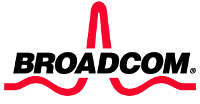Broadcom announces eight hybrid satellite and terrestrial SoCs
Tuesday, September 9th, 2014
Broadcom Announces World’s First Single-chip Hybrid Direct Broadcast Satellite Terrestrial and IP Devices for Set-top Boxes with Integrated HEVC and MoCA 2.0; New Family of SoCs Provides Broadcasters with Spectrum-efficient Content Upgrade Path Including Latest Advanced Video Compression Technology
- Full portfolio of devices addresses global hybrid direct broadcast satellite (DBS), digital terrestrial and IP set-top box markets
- Common platform design enables OEMs to quickly develop and deploy region-specific offerings
- Integrated HEVC allows broadcasters to deliver content more efficiently for HD upgrades or channel additions
- Hybrid DBS/terrestrial design offers superior coverage to single technology solutions
AMSTERDAM — IBC 2014 — Broadcom Corporation (NASDAQ: BRCM), a global innovation leader in semiconductor solutions for wired and wireless communications, today announced the world’s first family of eight new hybrid satellite and terrestrial system-on-a-chip (SoC) broadcast devices for set-top boxes (STBs). The new series is engineered with pin-to-pin compatibility, allowing a single set-top design to be leveraged across the entire family. Broadcom will demonstrate the chips at IBC, September 12-16, RAI Amsterdam, Booth 2.C25.
The new series brings Broadcom’s high efficiency video compression (HEVC) technology to terrestrial markets, enabling broadcasters to utilize spectrum more efficiently than with current MPEG-4 video compression standards. As a result, broadcasters gain options to deliver more competitive channel line-ups and improved content quality through the same or lower spectrum footprint. Broadcom’s new family of devices also combines HEVC with the advanced modulation efficiencies of DVB-S2, DVB-T2, ISDB-T and ATSC, and high-performance IP connectivity with MoCA 2.0. This unprecedented level of integration provides set-top manufacturers with a compelling value proposition for broadcasters as they continue service upgrades.
“The combination of satellite and terrestrial front-ends that this family offers now provides significant benefits to viewers who want the best channel and content selection available,” said Rich Nelson, Broadcom Senior Vice President of Marketing, Broadband & Connectivity Group. “We believe HEVC will continue to be a key driver for the delivery of high-quality content. Today’s announcement demonstrates our commitment to our customers to proliferate HEVC broadly across our set-top box product family.”
“Broadcasters and regulators throughout Europe and in emerging regions, including Africa, are waiting for the arrival of DVB-T2 with HEVC to launch or extend HD terrestrial services. In addition, we expect the ability to deliver hybrid IP-services using HEVC will benefit broadcasters launching premium add-on services, including some delivered over bandwidth-constrained cellular networks,” said Sam Rosen, ABI Research Practice Director. “In addition to allowing the next generation of services, Broadcom’s integration of HEVC in terrestrial, satellite and cable chipsets provides broadcasters with a future-proof to ensure the set-top boxes they deploy today will provide value through 2020 and beyond.”
Key Features of Broadcom’s Hybrid DBS/Terrestrial Device Family
- DVB-S2 compliant
- Integrated DBS Full Band Capture (FBC) front-end receiver
- Single FBC tuner and one to two DVB-S2 demodulators
- Compliant with digital terrestrial standards, including:
- ISDB-T (Brazil, Latin America, the Philippines, Botswana and Japan)
- ATSC (North America and Korea)
- DVB-T2 for hybrid STB access (Europe and South Africa)
- Integrated MoCA 2.0
- HDMI 2.0 and component output
- B15 ARMv7-CPU, 5K DMIPS (BCM7364) and 2K DMIPS (BCM73649)
- HEVC decode 1080p60 (10bit) with 4K-x-2Kp60 upscale
- OpenGL ES 2.0 Graphics Engine
- Full pin- and software-compatible product family
Availability
Broadcom’s hybrid DBS/terrestrial device family is available in both integrated MoCA and non-MoCA versions and is currently sampling.
Latest News
- Barb to start reporting TV-set viewing of YouTube channels
- SAT FILM selects multi-DRM from CryptoGuard
- Qvest and ARABSAT to launch OTT streaming platform
- ArabyAds & LG Ad Solutions partner with TVekstra in Turkey
- Freeview NZ satellite TV service to move to Koreasat 6
- Comscore expands YouTube CTV measurement internationally
